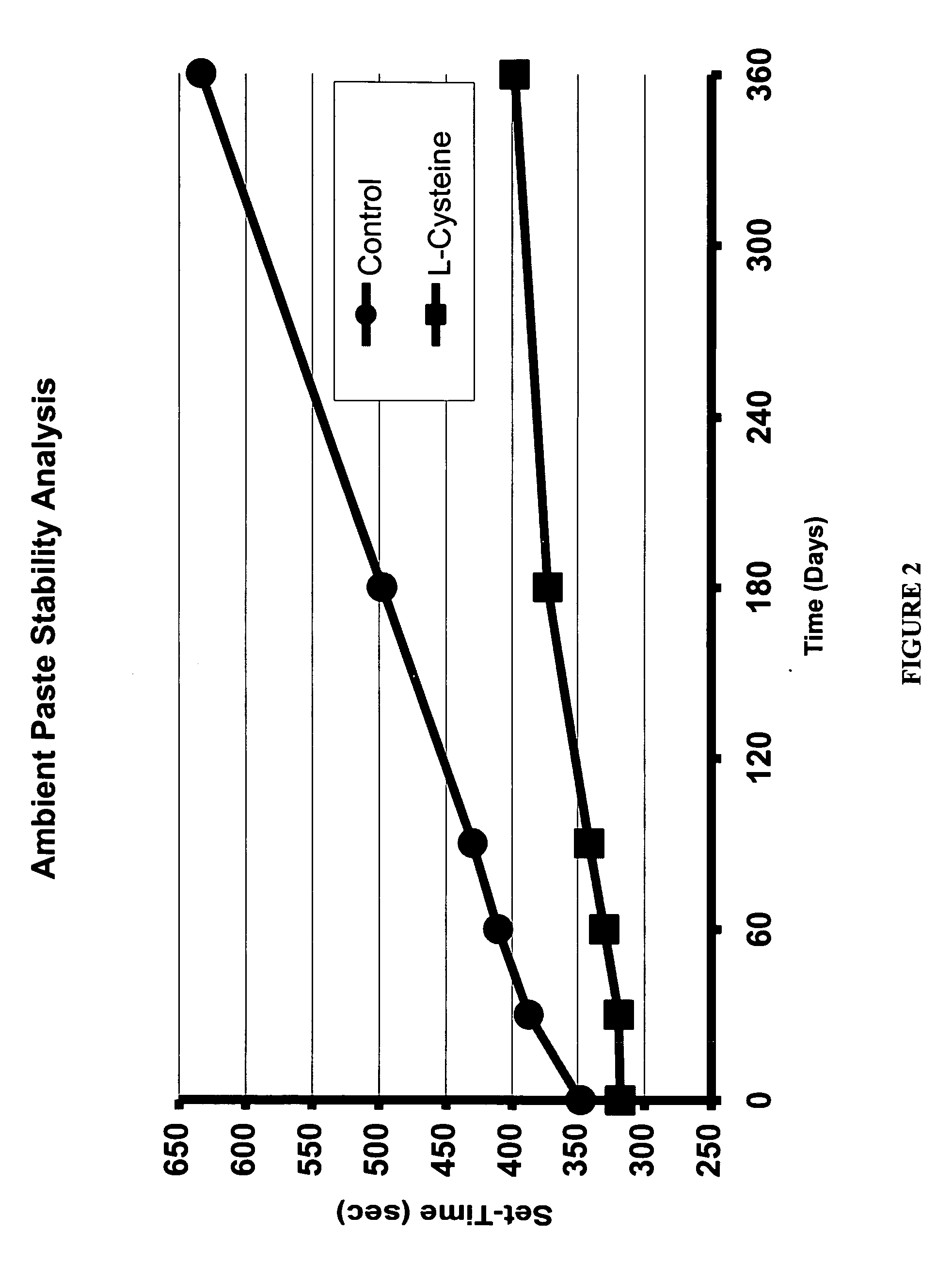Stabilizers for polymerizable biocompatible materials
a biocompatible material, stabilizer technology, applied in the direction of plastic/resin/waxes insulators, impression caps, dental prosthetics, etc., can solve the problems of premature polymerization, metal salts, ascorbates, etc., to increase the flexibility of the final product and facilitate processing
- Summary
- Abstract
- Description
- Claims
- Application Information
AI Technical Summary
Benefits of technology
Problems solved by technology
Method used
Image
Examples
example 2
[0051] An L-cysteine salt solution was prepared and sprayed onto two batches of untreated fillers. One batch was then silanated and mixed with resin to form a stabilized paste; the other batch was mixed directly (without silanation) with resin to form a stabilized paste.
example 3
[0052] 1% and 0.5% of L-cysteine stabilizer was added to A resin. Control resin without the addition of stabilizer was also prepared. Set-time and temperature upon cure were measured at time, t=0, t=10 days, t=45 days, and t=70 days for both the stabilized materials and the control. Results indicate that the addition of the L-cysteine inhibited auto polymerization of the samples under 45° C. storage as compared to control samples—one of which polymerized after 20 days (FIG. 1). In addition, the L-cysteine containing samples did not inhibit polymerization upon mixing with a peroxide containing resin. In general, the set-time of the stabilized samples remained below 200 seconds for 50 days when stored at 45° C., which compares favorably to control samples that required refrigeration to achieve the same effect.
[0053] B) The utilization of stabilized accelerator containing resin in the preparation of composite paste also demonstrated maintenance of the set-time and reaction temperature...
PUM
| Property | Measurement | Unit |
|---|---|---|
| particle size | aaaaa | aaaaa |
| particle size distribution | aaaaa | aaaaa |
| particle size | aaaaa | aaaaa |
Abstract
Description
Claims
Application Information
 Login to View More
Login to View More - R&D
- Intellectual Property
- Life Sciences
- Materials
- Tech Scout
- Unparalleled Data Quality
- Higher Quality Content
- 60% Fewer Hallucinations
Browse by: Latest US Patents, China's latest patents, Technical Efficacy Thesaurus, Application Domain, Technology Topic, Popular Technical Reports.
© 2025 PatSnap. All rights reserved.Legal|Privacy policy|Modern Slavery Act Transparency Statement|Sitemap|About US| Contact US: help@patsnap.com


